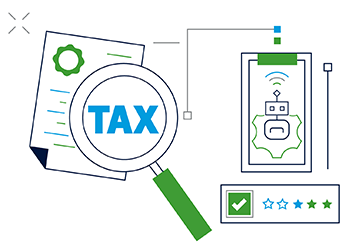Key takeaways
Sharp growth in claims – 12,956 companies lodged R&D claims in 2022–23, with total expenditure jumping 44.6% to $16.2 billion.
Multinationals reshape the landscape – Public and multinational businesses recorded a 77.5% increase in claims, driven by the first time inclusion of substituted accounting periods.
Industry shift – Mining entered the top five industries for R&D expenditure alongside professional services, manufacturing, wholesale trade, and ICT.
On 25 September 2025, the ATO published the anticipated second tranche of transparency information in respect of R&D Tax Incentive (RDTI) claims reported by companies for the 2022-23 income year.
Unlike the income tax transparency laws, the relevant RDTI law allows a two-year deferral for publication to recognise potential commercial sensitivities.
 Notably this tranche also includes for the first time the relevant information for approximately 850 companies and multinationals with substituted accounting periods (SAPs) for 2022-23. This change to the claim profiles included in the data has resulted in the following key changes since the 2021-22 report:
Notably this tranche also includes for the first time the relevant information for approximately 850 companies and multinationals with substituted accounting periods (SAPs) for 2022-23. This change to the claim profiles included in the data has resulted in the following key changes since the 2021-22 report:
- A 10.5% increase in the number of claimants
- A 44.6% increase in the total amount of R&D expenditure claimed
- A 28% increase in the average claim
- A 77.5% increase in claims by public and multinational businesses
- A 4.8% reduction of Australian-owned companies in the total population
The mining sector is making its appearance in the top 10 claimants and the top 5 by expenditure
Background
Once again, and as with the annual company income tax transparency reports, the RDTI transparency report has been published in two separate parts:
- The 2022-23 Report of data about RDTI entities, and
- The accompanying ATO RDTI transparency report 2022-23 with commentary on the data released.
The current report also includes an additional 179 companies that made R&D claims for the 2021–22 income year after the cut-off date for inclusion in last year’s report.
Key population data observations
As with the first 2021-22 data report, a simple Excel document contains the disclosable R&D tax information of all R&D tax offset claimants. The accompanying ATO report follows the same structure as the first ATO 2021-22 report, with a factual rather than contextual approach covering the focus of the report, the R&D population overview, an industry overview and the RDTI compliance approach.
Observations from the data published, supplemented by the ATO commentary, include:
- 12,956 company claimants representing a 10.5% increase on the 11,724 claimants for 2021-22 (including the additional 179 published this year).
- A 44.6% increase in the total amount of R&D expenditure claimed in 2022–23 by the 12,956 claimants, increasing to $16.2 billion from $11.2 billion in 2021-22.
- The range of total notional deductions claimed largely staying steady between $220,184,724 and $3,497 (2021-22: $200,460,127 to $2,974) with Atlassian being the highest claimant by almost $70 million.
- An approximate 28% increase in the average claim, with the average claim for the 2022-23 claims being $1,250,754 (original 2021-22 data: $972,145).
- A population of claimants encompassing 46% (6,016) small businesses with an aggregated turnover of less than $10 million, 35% (4,507) private groups with a turnover of more than $10 million and 19% (2,428) public and multinational businesses. Small businesses with turnover of less than $10 million made up 48% in 2021-22.
- The average claim per company in each business population being $3,599,102 for public and multinational businesses, $1,111,133 for privately owned and wealthy groups and $403,232 for small businesses.
- Public and multinational businesses claiming a total of $8.7 billion, a substantial 77.5% increase from the $4.9 billion in 2021-22, likely due to the first-time inclusion of multinational groups with SAPs.
- Six multinationals claiming more than $100 million with the mining sector making an appearance in this category, joined by the software and Medtech sectors that dominated in 2021-22.
- The mining sector dominating claims in the range from Chevron at $95,768,477 down to Woodside at $64,002,860.
- An approximate distribution of R&D claim sizes reflecting most claimants being small businesses or startups:
- Finally, due to the inclusion of multinationals with SAPs, Australian-owned companies now account for a lower proportion of claimants, 93% of taxpayers (2021-22: 97.8%) with 12,055 taxpayers reporting R&D expenditure (2021-22: 11,286).
Key industry data observations
![]()
Once again, the professional, scientific, and technical services industry made up most claims in all population sectors, with 5,663 claims amounting to $6,193,638,114 (44%). However, the entry of the mining multinationals affected the top five industries in order of RDTI expenditure claimed, now being:
- Professional, scientific, and technical services (#1 in 2021-22)
- Manufacturing (#2 in 2021-22)
- Mining
- Wholesale trade (#3 in 2021-22)
- Information media and telecommunications (#4 in 2021-22)
Financial and insurance services lost their former place in the top five to mining.
The separate discussion of the RDTI compliance approach by the ATO and the Department of Industry, Science and Resources (DISR) added little information of note with a broad discussion of the compliance tools used including Taxpayer Alerts, risk-based R&D claim reviews, promoter penalty laws, and the various ATO tax programs encompassing corporate populations.
Data in context of SERD and redesigned VTTC
Adding the annual RDTI data to ATO published data was intended to inform public debate, improve awareness about the R&D aspects of the Australian company income tax self-assessment system, and assist in increasing community confidence that companies are paying the right amount of tax.
Notably this second tranche has been published whilst there is ongoing consultation and review as part of the strategic examination of Australia’s wider R&D ecosystem (SERD) as well as a redesigned voluntary tax transparency code (VTTC). Initial suggestions in the RDTI issues paper released by SERD seem to suggest new streams of RDTI eligibility, the complexities of which would largely defeat the purpose of these data disclosures.
Regardless, from a tax governance and reputational perspective, given that this information will continue to be made public on an annual basis, taxpayers could consider whether to make material R&D disclosures in any corporate tax disclosures made under the VTTC to explain R&D tax positions in detail.
Notably the Board of Taxation released a draft redesigned VTTC in June 2025, aiming to align the VTTC with evolving global tax transparency norms and make it easier for medium and large businesses to participate meaningfully.
Key updates include:
- A separation of reporting requirements for CbC regimes designed to reduce duplication and align with global transparency standards.
- An ATO reconciliation requirement such that entities must now provide a reconciliation between their VTTC report and the ATO’s Corporate Tax Transparency Report, improving consistency and traceability.
- Template guidance including new example formats for VTTC reports tailored to both public and non-public CbC reporters based on fictitious businesses.
- Optional additional disclosures to enhance transparency, such as tax governance or sustainability-linked tax positions.
- A Self-Assessment checklist to help entities verify completeness and accuracy before publishing their VTTC report.
A final version of the VTTC is expected to be released in the second half of 2025.
Future reports
 These transparency publications will continue annually with disclosures based on the company income tax returns submitted or as amended by each taxpayer. As evident by this second tranche, existing data will be updated each time for any subsequent claims or amendments made after the ATO extracts the data.
These transparency publications will continue annually with disclosures based on the company income tax returns submitted or as amended by each taxpayer. As evident by this second tranche, existing data will be updated each time for any subsequent claims or amendments made after the ATO extracts the data.
As should now be expected, affected taxpayers and their tax agents should now expect regular contact from the ATO to review and confirm the R&D expenditure tax return data for past income years. The ATO has added a notice to the R&D tax schedules and the R&DTI calculator to ensure that future applicants are aware that their data will be published.
FOR MORE INFORMATION
If you would like to learn more about the topics discussed in this article, please contact our R&D Tax Incentive team.
Róisín Arkwright

Róisín Arkwright is a Director in the Sydney Tax Services division, specialising in R&D Tax Incentives.
Róisín specialises in assisting clients in navigating the corporate tax technical challenges associated with complex R&D claims. This includes handling start-up and associate transactions, addressing cross-border tax issues, managing large infrastructure complexities, and resolving feedstock-related concerns.
Get in touch with Róisín >
Jessica Olivier

Jessica Olivier is a National Executive, and a Partner of the Tax Services division in Sydney.
Jessica has specialised in R&D tax and assisted a diverse range of industries to identify R&D opportunities and access the R&D tax benefits, including start-up innovators, SMEs and large multi-national corporations.
Get in touch with Jessica >




